Restaurant Supply Chain: How To Optimize The Flow
To bring delectable meals to our tables, the restaurant sector runs a supply chain. Food supply chain management is a sophisticated web of suppliers, distributors, and operators. Every pleasant eating experience is the result of an organized and effective food distribution system. The restaurant supply chain encompasses all the processes involved in sourcing, procuring, storing, and delivering the ingredients and products.
Without effective restaurant supply chain management in place, the restaurant industry would struggle to consistently provide high-quality meals. Moreover, they would not be able to keep up with evolving consumer demands. Restaurant owners and managers should firmly hold on to their supply chains and adapt their strategies to meet unforeseen challenges.
This article will examine the idea of supply chain management and investigate the challenges it encounters. Furthermore, it will offer practical solutions and management techniques to maintain smooth operations.
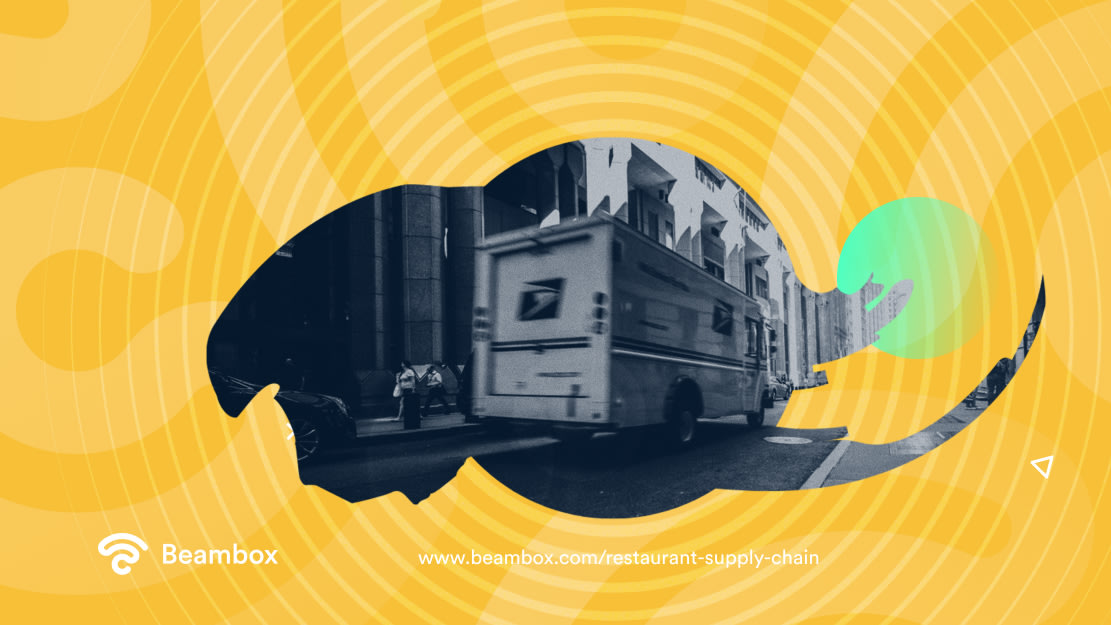
Understanding the Supply Chain
Understanding the restaurant supply chain is crucial for restaurant owners and managers to effectively manage their operations. It involves the process of sourcing ingredients, managing inventory, and delivering meals to customers promptly. By understanding the supply chain, restaurants can make informed decisions and implement strategies that ensure efficient and consistent operations.
Why Is Restaurant Supply Chain Management Important?
Restaurant supply chain management is important because it plays a crucial role in ensuring the smooth operation of a restaurant. By effectively managing the supply chain, restaurants can avoid stockouts, maintain consistent quality, and reduce costs.
Food supply chain management consists of the following processes:
- It begins with the identification of suppliers and the procurement of ingredients, beverages, and equipment.
- It encompasses the flow of goods through distribution centers and warehouses, as well as transportation logistics.
- It involves effective management of this process, which ensures the availability of fresh, high-quality ingredients, minimizes waste, and reduces costs.
- It also involves inventory management, demand forecasting, and collaboration with suppliers to maintain optimal stock levels.
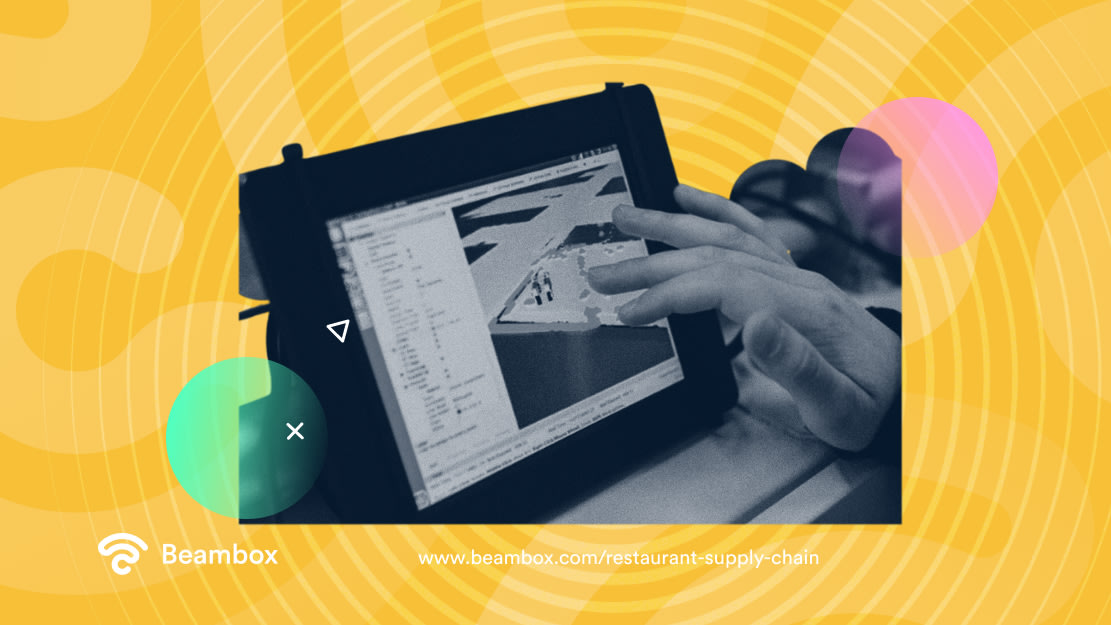
What Does Supply Chain Include in Restaurants?
Supply chain management varies in the restaurant industry. Don’t expect to find an all-in-one restaurant supply chain that will cater to the majority of eateries. So, the question is, what does supply chain include in restaurants?
To understand this, you must know about the supply chain cycle. You have gotten a brief idea from the summary above. In this section, we will delve deeper into the components of supply chain management.
Restaurant Supply Chain: Supplier Selection
Restaurants need to identify and select suppliers based on certain criteria, such as:
- Reliability
- Quality
- Pricing
Restaurant suppliers include farmers, fishermen, and food processors that provide the raw materials and food items that restaurants need. A restaurant may also demand a supply of non-food items, such as cleaning supplies, utensils, packaging materials, etc.
At times, a supply chain may not include the supplier directly and may involve a distributor. The distributor acts as a middleman between vendors and eateries. They buy products from various suppliers and deliver them to restaurants according to their requirements. Distributors frequently stock a large variety of goods and provide ease by combining orders from various vendors.
Restaurant Supply Chain: Menu Planning
Chefs carefully choose dishes and determine the ingredients needed based on patron tastes, seasonal availability, and financial constraints. Menu planning is a crucial component of a food supply chain management. It ensures that the necessary ingredients are available in the right quantities to meet customer demand. A shortage in supply will have an impact on the menu, and chefs would be struggling to make ends meet.
Restaurant Supply Chain: Demand Forecasting
Restaurants must accurately forecast their demand to optimize their supply chain. This involves analyzing historical data, market trends, seasonal variations, and customer preferences to estimate the quantities of supplies required. Accurate forecasting helps prevent shortages or excess inventory.
Restaurant Supply Chain: Inventory Management
A key component of the food supply chain management is efficient inventory control. Management needs to monitor and regulate the stock levels to prevent shortages, reduce waste, and assure prompt replenishment. Thanks to modern technology, restaurants can now integrate various inventory management software programs to streamline the overall process.
Restaurant Supply Chain: Delivery Management
After selecting the restaurant suppliers, predicting resources, and calculating inventory management, the next part is timely delivery. Timely delivery is crucial to ensuring that restaurants receive their supplies on schedule and can continue to meet customer demands. This involves coordinating with suppliers, scheduling deliveries, and tracking shipments to ensure they arrive on time.
Restaurant Supply Chain: Quality Control
Upon receiving raw materials from restaurant suppliers, the items must undergo a quality control check. This is to ensure that everything is according to food safety regulations. The process involves:
- Implementing strict quality control inspections.
- Supplier audits.
- Proper packing, food handling, and storage protocols. This is especially important for perishable items such as dairy products.
If there are any issues, the management should trace them back to the restaurant food suppliers and share their feedback.
Restaurant Supply Chain: Storage and Warehousing
Restaurants require appropriate storage facilities to house perishable and non-perishable items. Temperature-controlled storage areas, refrigerators, freezers, and dry storage spaces are crucial to maintaining the freshness and quality of ingredients.
Restaurant Supply Chain: Food Preparation and Production
Once the ingredients are available, restaurants engage in food preparation and production. Chefs and kitchen staff work diligently to transform raw materials into delectable dishes while adhering to standards and safety regulations.
Restaurant Supply Chain: Customer Service
Although it may not directly relate to the supply chain, customer service is essential. The prompt and accurate delivery of orders, attentive employees, and effective communication all affect customer satisfaction and loyalty.
Restaurant Supply Chain: Waste Management
The restaurant supply chain also takes care of recycling and proper food waste disposal. Modern supply chain management is increasingly embracing sustainable practices like recycling and cutting back on packaging waste. Here are some ways waste management plays an important role in food supply chain management:
- Waste management starts at the beginning. This means the chosen restaurant food suppliers must follow proper waste management practices. These practices are reducing packaging waste and implementing recycling programs.
- Restaurants should prioritize efficient inventory management to minimize food waste.
- During quality control, the restaurant should select only fresh and properly packed raw materials. You should return the remaining items to the restaurant supplier.
Waste management practices not only reduce the overall cost but also have a positive effect on the environment.
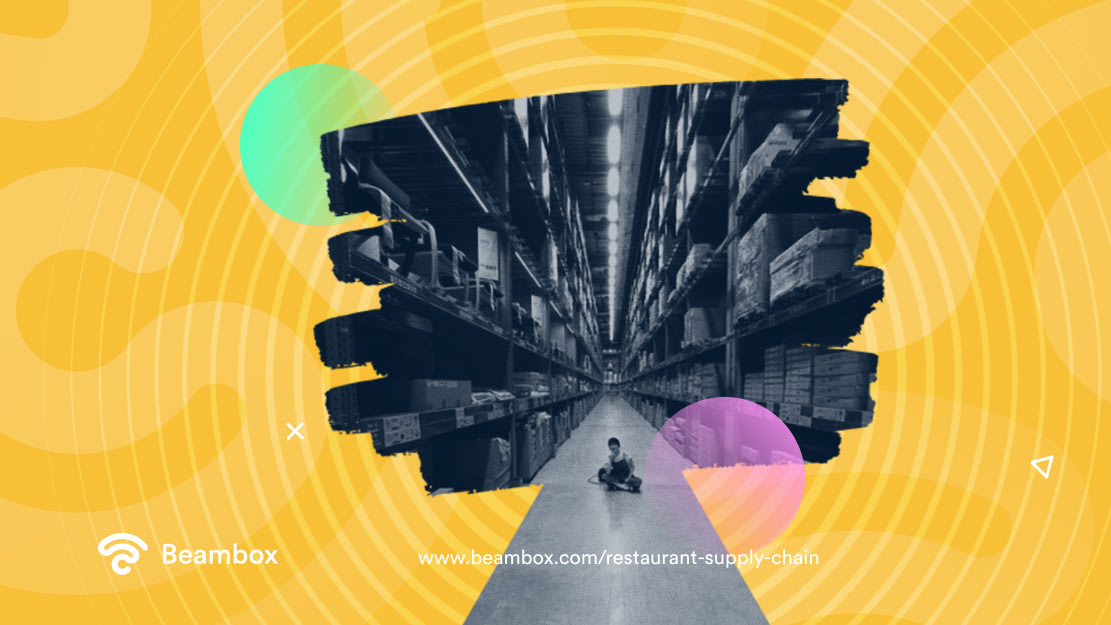
Restaurant Supply Chain Challenges
Restaurant food suppliers are difficult to work with, and the most common challenges are inconsistent delivery schedules and quality standards.
Here are some common restaurant supply chain challenges:
-
Logistical Challenges: With various suppliers, distributors, and manufacturers involved, the restaurant supply chain is highly fragmented. Perishability of food supplies, price discrepancies, and maintaining consistent quality across numerous suppliers are some logistical challenges faced by restaurants.
-
Seasonal Challenges: The demand for certain foods may arise depending on seasonal changes. Restaurants must adjust to these shifts in demand, which can be difficult to manage in terms of inventory and delivery.
-
Quality Control Challenges: It might be difficult to maintain constant quality along the restaurant supply chain. Restaurants depend on their suppliers to deliver premium ingredients. However, differences in sourcing, processing, and storage techniques can have an impact on the overall quality of the raw materials. Ensuring quality control from farm to table requires effective communication and monitoring mechanisms.
-
Cost Control Challenges: To continue to be profitable, the restaurant industry must control costs across the supply chain. Price discrepancies, transportation expenses, and food waste can have a significant impact on a restaurant’s financial health line. Finding a healthy balance between budgeting and quality is never easy.
-
Food Safety Challenges: The restaurant industry must comply with various food safety regulations to ensure the health and well-being of its customers. Proper handling, storage, and transportation practices throughout the food supply chain is vital to prevent contamination and maintain food safety.
-
Inventory Management Challenges: To prevent shortages or excess stock, it’s essential to optimize inventory levels. The restaurant supply chain must balance keeping adequate inventory on hand to meet client demand. Accurate demand forecasting, real-time inventory tracking, and efficient stock rotation are key aspects of effective inventory management.
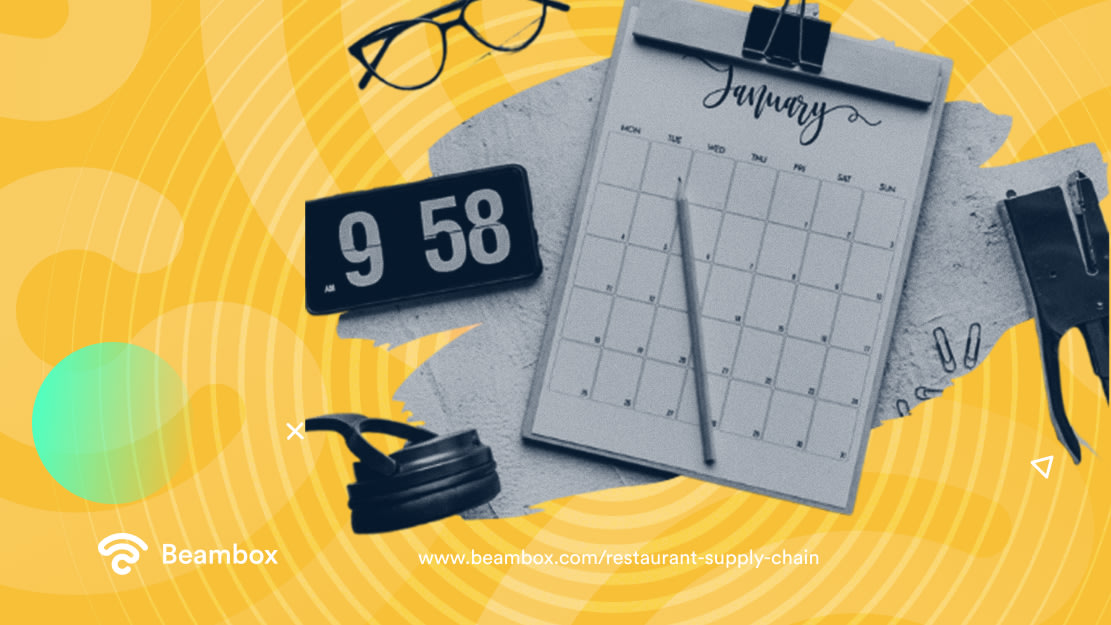
Restaurant Supply Chain Solutions
To address the challenges, implementing various restaurant supply chain solutions is the answer. But what exactly these solutions are is the main question. Restaurant supply chain solutions refer to a range of strategies and technologies to help optimize inventory management and streamline operations. These solutions may include:
- Implementing advanced demand forecasting algorithms
- Adopting inventory management software
- Integrating real-time inventory tracking systems
- Implementing efficient stock rotation practices.
These are some suggestions that can help restaurants tackle the challenges head-on and improve the flow of the supply chain.
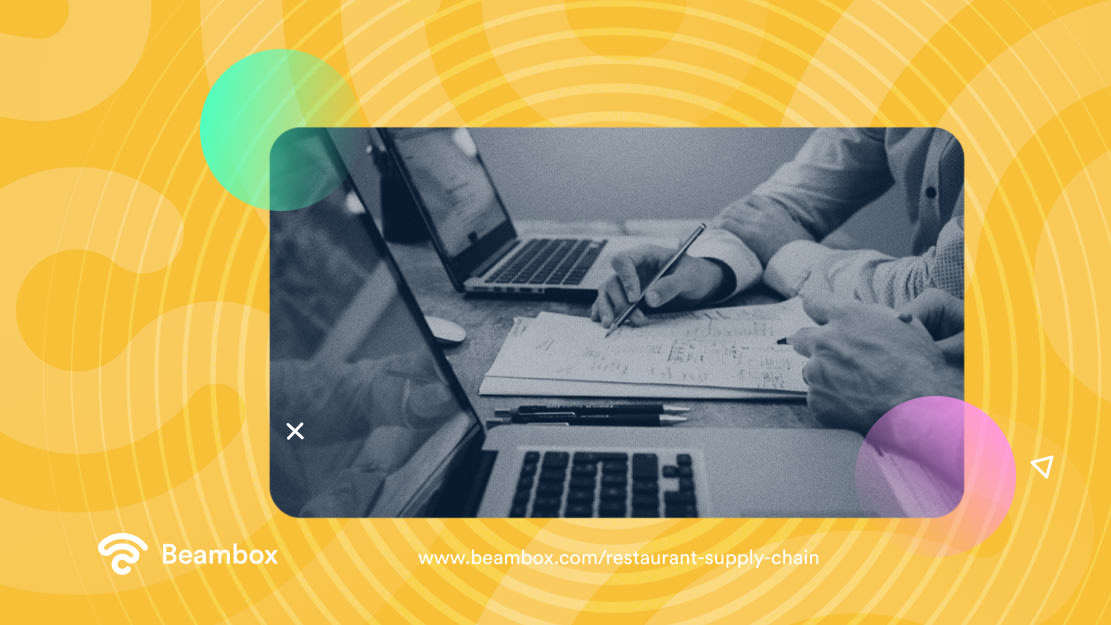
How To Improve a Restaurant Supply Chain
To overcome these obstacles and guarantee the availability of fresh and high-quality raw materials effective, supply chain management is crucial. Here are some steps on how to improve a restaurant supply chain.
-
Partnership and cooperation: It’s important to establish reliable relationships with restaurant suppliers. This promotes understanding, communication, and trust. Demand and supply can be better aligned through collaborative planning and forecasting, lowering the possibility of overstocking or stockouts.
-
Technology Integration: The benefits of integrating a management system allow for real-time tracking of inventory levels, order processing, and stock replenishment. By leveraging data analytics and predictive modeling, inventory-level optimization is possible. It will identify demand patterns and improve forecasting accuracy.
-
Network for Streamlined Distribution: The restaurant supply chain can be simpler and less complex by combining restaurant food suppliers and distributors. Accepting local sourcing ensures fresher raw materials and supports nearby businesses while lowering logistical challenges.
-
Continuous Improvement and Flexibility: Regularly reviewing and optimizing processes within the supply chain enhances efficiency and identifies areas for improvement. This allows for quick adjustments to changing market conditions, such as sudden shifts in demand, price discrepancies, or supplier disruptions. Restaurant owners and managers can lessen any challenges in the restaurant supply chain by applying these solutions. Along with streamlining processes, this also improves client satisfaction, lowers expenses, decreases waste, and boosts the restaurant’s productivity and profit.
Supply Chain Software for Restaurants
Implementing supply chain software for restaurants can streamline and optimize various aspects of the restaurant supply chain. These software solutions help manage inventory, procurement, supplier relationships, logistics, and other related processes. Here are some common types of supply chain software used in the restaurant industry:
Inventory Management Software
Restaurants can track and manage their inventory levels in real-time thanks to inventory management software. It assists in automating processes like counting stock, reordering, and inventory tracking. These software programs give information about inventory turnover and item popularity and can produce reports that can help with decision-making.
Procurement and Purchase Order Software
Procurement software streamlines the procurement process by automating purchase orders, supplier management, and order tracking. It helps restaurants maintain a centralized database of approved suppliers, compare prices, manage contracts, and ensure timely deliveries.
Supplier Relationship Management (SRM) Software
SRM software makes it easier to collaborate and communicate with suppliers. It assists in managing supplier data, performance indicators, and contract terms. To assure quality, certain SRM software solutions offer tools for supplier assessments, audits, and performance monitoring.
Software for Demand Forecasting and Analytics
To accurately forecast future demand, the restaurant supply chain must use forecasting software. The software should take historical data, market trends, and outside influences into account. Restaurants can plan their output, optimize inventory levels, and reduce waste with the use of these technologies. Advanced analytics software can help uncover possible sales opportunities and provide insights into seasonal fluctuations and customer preferences.
Logistics and Route Optimization Software
Logistics software aids in cost-effective delivery route optimization and the streamlining of transportation operations. GPS devices can provide real-time tracking and updates. These technologies take into account variables including distance, traffic, and truck capacity. This creates effective delivery schedules.
It’s crucial to know that a restaurant’s software requirements may change depending on its size, complexity, and operational needs. Some restaurants may decide to integrate specialized software solutions to meet their unique demands. Others may prefer to use all-inclusive restaurant management systems that include supply chain functions.
Would you like some extra help managing your restaurant’s supply chain? At Beambox, we want to help you grow your business with our all-in-one WiFi marketing platform.
Our marketing platform will connect you with customers and provide the restaurant industry with valuable customer data. With this knowledge, you can make decisions to further enhance your guest satisfaction score. Start your Beambox free trial today.
Get Started With Free WiFi Marketing
Beambox helps businesses like yours grow with data capture, marketing automation and reputation management.
Sign up for 30 days free


